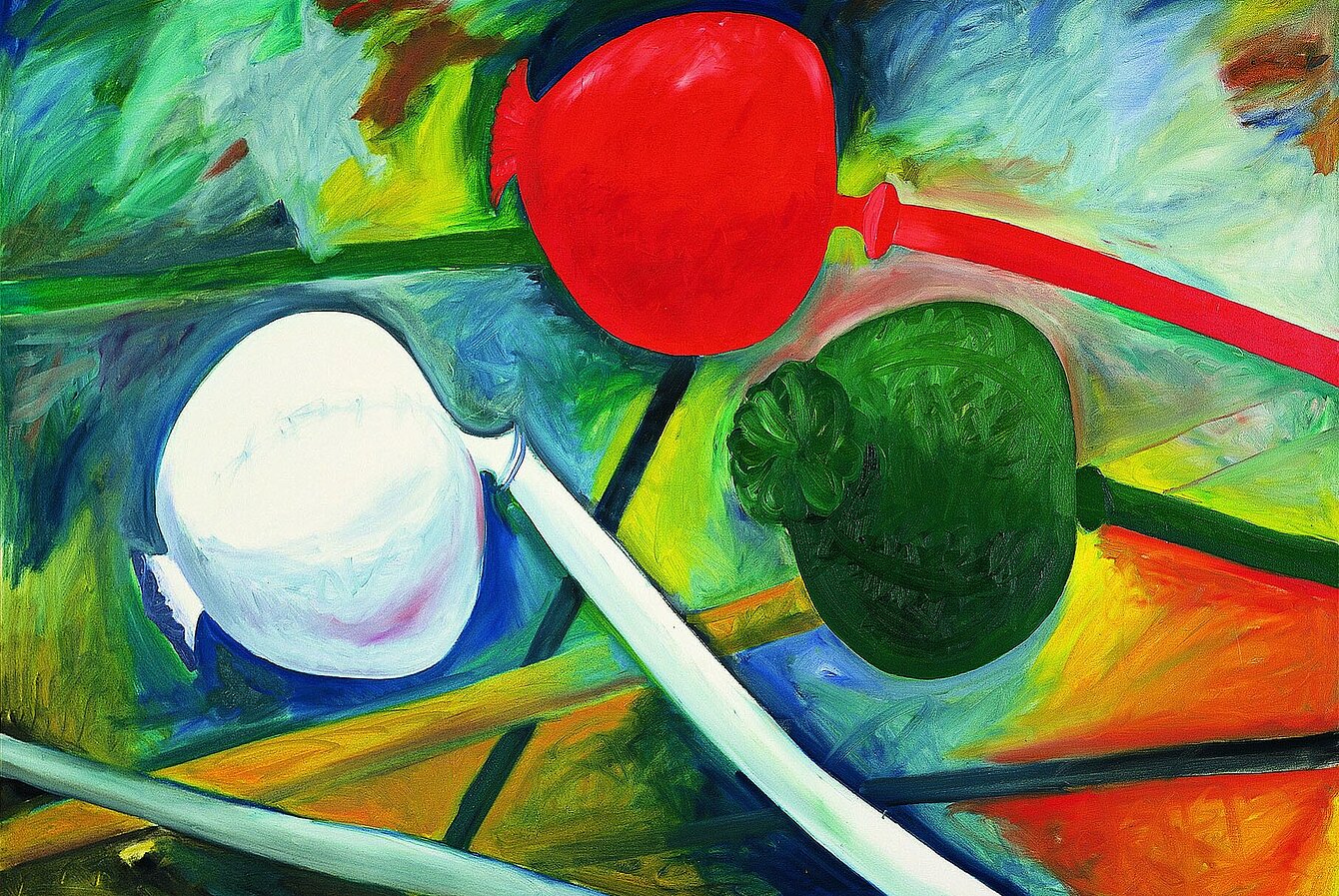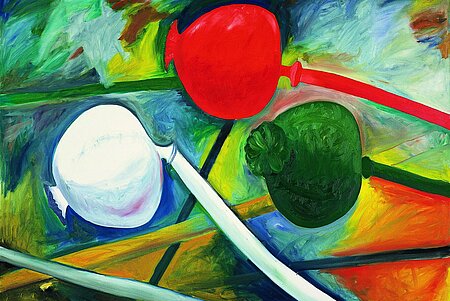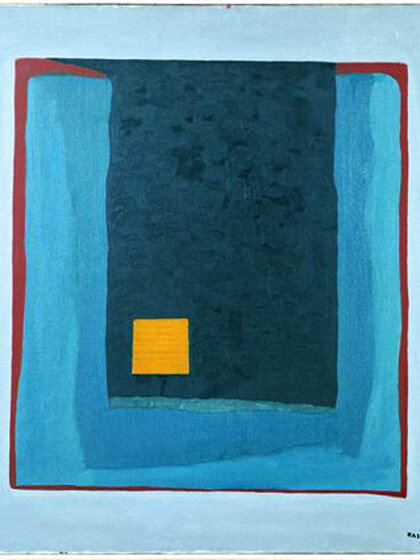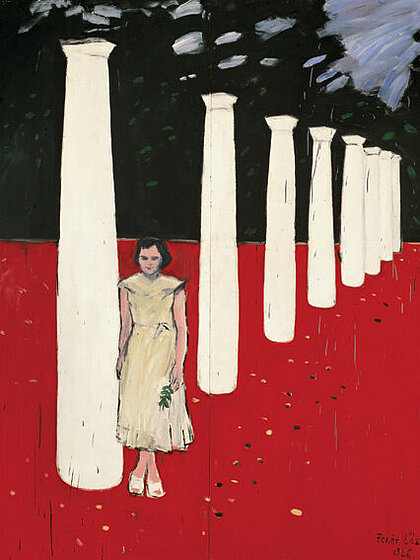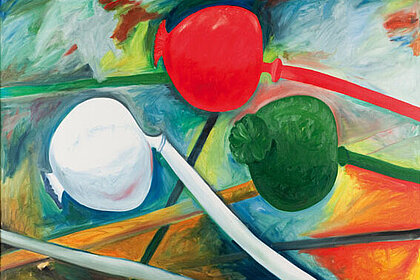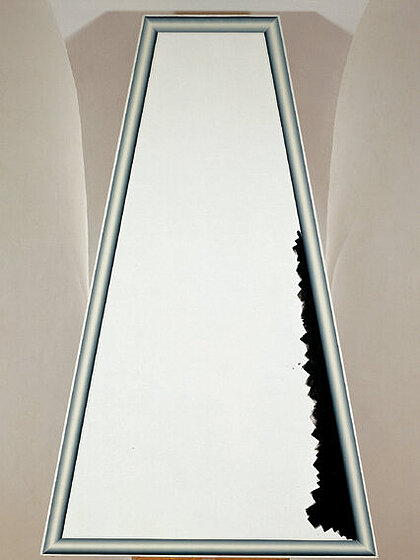In 1973 the Neue Galerie began a close cultural exchange with Austria's neighbouring country, Hungary. In the years that followed, artists from Hungary were also invited to the "International Painting Weeks in Styria", founded by the Director of the Neue Galerie, Wilfried Skreiner, in 1966 and organised by the Neue Galerie until 1992, and originally involving Italy, ex-Yugoslavia and Austria. In addition, numerous solo exhibitions by Hungarian artists were staged in cooperation with the Ludwig Museum and the Kunsthalle Budapest. Hungarian artists also participated at both of the Trigon Biennale shows of 1989 and 1991 (under the curatorship of Katalin Néray and Lorand Hégyi). In the course of these exhibitions, works by many of the artists involved were added to the Neue Galerie's collection. In 1996 Peter Weibel curated the exhibition "Jenseits von Kunst" (Beyond Art) which was shown in Graz, Budapest and Antwerp, affording a comprehensive review of the history of art and science in the 20th century.
These various activities resulted in an extensive stock of Hungarian artworks being accumulated in the Neue Galerie collection, now to be exhibited in an academically researched presentation. Some classical introductory positions, such as photographs by Lászlò Moholy-Nagy or works by Lajos Kassák and Sándor Bortnyik, lead into the exhibition's focus on Hungarian art from the 1960s to the 1990s: a key area of Hungarian art in the sixties involves abstract-geometric trends. The range of works on display encompasses constructivism (János Fajó, Imre Kocsis, István Nádler, András Mengyán), Op Art (Viktor Vasarely) and also artists who worked in very diverse areas in this regard and developed quite specific positions (Imre Bak, Tamás Hencze). The 1970s are typified by conceptual approaches (Gabor Attali, Imre Bak, Dora Maurer), with a sometimes clearly perceptible criticism of the Communist system (Sándor Pinczehelyi). In the 1980s there is a notable movement towards painting, as was also to be witnessed in Austria and ex-Yugoslavia, including both deliberately figurative (László Féhér, Karoly Kelemen) and expressive-abstract approaches (Akos Birkás, András Gál, Miklos Palás), produced by a younger, mainly post-war generation. It is of notable interest that many artists did not align themselves with just one movement, preferring instead to work in various areas. Imre Bak, for example, first produced abstract-geometric works, then turned to purely conceptual works, while during the eighties István Nádler's geometric constructions evolved into a kind of expressive painting. The nineties saw an opening-up towards contemporary trends in international art. Another younger generation centred around János Sugár began to work with a huge variety of media. Painting took a back seat again and became just one of many means of expression. Thus in Róza El-Hassan's work, for example, it is objects, installations, actions, photography and video that become more important.
Comprising around 200 paintings, drawings, sculptures and installation objects, this exhibition gives an overview of the trends and developments of recent fine art in Hungary. Through cooperation with the Janus Pannonius Múzeum in Pécs - a twin city of Graz and Capital of Culture 2010 - particular positions within this overview (including Vicor Vasarely) have been consolidated with loaned items. Not least, however, the exhibition traces the recent collecting history of the Neue Galerie during these significant decades. Hence it can also be seen as a continuation of last year's show "Viaggio in Italia. Italienische Kunst 1960 bis 1990 aus der Sammlung der Neuen Galerie Graz" (Viaggio in Italia. Italian art 1960 - 1990 from the collection of Neue Galerie Graz), and thus as part of a programmatic theme documenting the Neue Galerie's activities as a focal point of the Central European Avant Garde since the 1960s.
List of artists:
ATTALAI Gábor | BAK Imre | BARANYAI András | BARTHA László | BERNÁT András | BIRKÁS Ákos | BORBÁS Klára | BORTNYIK Sándor | BULLÁS József | CSIKY Tibor | DEIM Pál | DÓCZI László | EL-HASSAN Róza | ERDÉLY Miklós | ERDŐS János | FAJÓ János | FEHÉR László | FELVIDÉKI András | FICZEK Ferenc | GÁL András | GÁYOR Tibor | GELLÉR István Bruno | HAJOS Tibor | HALÁSZ Károly | HATOS Csaba | HENCZE Tamás | HORVÁTH János | KÁDÁR György | KÁROLYI Zsigmond | KASSÁK Lajos | KELEMEN Károly | KESERÜ Ilona | KISMÁNYOKY Károly | KOCSIS Imre | KONCZ András | KONDOR Béla | KONKOLY Gyula | KÖRÖSÉNYI Tamás | LAKNER László | LENGYEL András | LUKOVICZKY Endre | MAURER Dóra | MAZZAG István | MEGYIK János | MENGYÁN András | MOHOLY-NAGY László | MOLNÁR Farkas | MULASICS László | NÁDLER István | NEMES Csaba | PÁL Imre | PÁLOS Miklós | PINCZEHELYI Sándor | POLLACSEK Kálmán | PRIHODA László | PÜSPÖKY István | RÉTFALVI Sándor | ROSKÓ Gábor | SALMUN András | SOÓS Tamás | SZABADOS Árpád | SZARKA Péter | SZEMENYEY-NAGY Tibor | SZIJÁRTÓ Kálmán | SZÖRTSEY Gábor | SZŰCS Attila | VALKÓ László | VASARELY Victor | VESZELY Beáta | VESZPRÉMI László



















